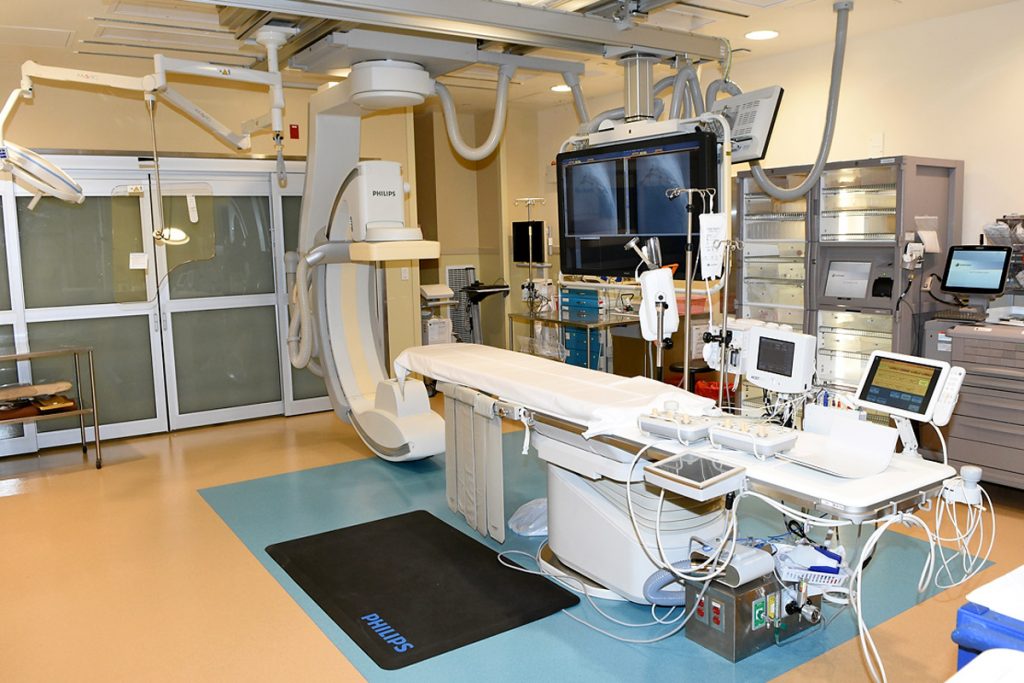5 Helpful Tips for Examining Cath-Labs

Cath-Labs allow the heart and arteries to be visualized enabling multiple tests and procedures to be performed. Utilizing the latest technology for Cath-Lab procedures is vital for the health and safety of patients. Understanding what is important will allow you to make the best decision when you choose to upgrade your existing hospital facilities. We can provide some advice as you plan on buying a Cath-Lab, to understand a few of the most important features.
The importance of quality Cath-Labs cannot be ignored. Dr. Sanmath Shetty, MBBS, MD (General Medicine), DM (Cardiology) espouses the benefits of using Cath-Lab procedure in preference to open-heart surgery.
“The procedures performed in a cardiac Cath-Lab almost always involve tiny, flexible tubes, called catheters, which can be used instead of surgery, to access the heart and blood vessels…It may take between 24-48 hours to heal unlike the open-heart surgeries that may take up to 2-4 weeks”
Dr. Sanmath Shetty, MBBS, MD (General Medicine), DM (Cardiology)
Any type of medical equipment or device should always be inspected thoroughly before purchase. We perform detailed inspections of all equipment before acquisition, but to help you understand what to look for, here are some items to consider.
Initial Considerations
U.S. Air Force Staff Sgt. Matthew Slaven, 81st Medical Operations Squadron cardiopulmonary technician, commented on the upgrade to the Cath-Lab and other equipment at the medical center at Keesler Air Force Base, Mississippi:
“Our demand for cardiology services here is great enough that we knew we would need to provide state of the art care. Keesler has historically been a leader in providing high-quality patient care and in order to continue to lead that effort, we had to upgrade and modernize our facilities to keep up with the technology and scope of services we provide…Our image quality is far better than what we had been using”
Sgt. Matthew Slaven, 81st Medical Operations Squadron cardiopulmonary technician
Cath-Labs allow doctors to see inside the patient without the use of invasive surgery, and the quality of the image will vary based on the type and age of the machine. The most modern equipment incorporates VR or augmented reality, but you must determine if this is necessary – similar information can be presented on a regular flat screen.
Your requirements will be determined by the type of tests and procedures your medical practice performs, and it may simply be enough to obtain a basic Cath-Lab.
Always consider the following factors before making an investment in Cath-Lab equipment.
Digital or Analog Imaging
Most Cath-Labs built since around 2000 are digital, but earlier equipment will have recorded information on cine film. The advantages of digital imaging are:
- Clearer images
- More options for reviewing information from differing angles
- Simpler data storage
- Faster image processing time
X-ray Generation
Another factor for image generation is the number of X-ray sources. Cath-Labs were originally built with single plane X-ray sources, but more recent equipment uses dual sources (bi-plane) and flat-panel detectors to create live moving images.
The benefits of dual sources with flat panel detectors include:
- Lower doses of radiation for high image quality
- Reduce image distortion
- Lower cost than film-based radiography
Equipment Mounting
Cath-Lab equipment can be floor or ceiling-mounted, and there is no operational difference. However, for the room that the equipment is to be installed in, there is a significant difference in structural requirements.
The ceiling-mounted components can weigh anywhere from 700lbs to over 3000lbs. It is therefore important to ensure that the room has structures and reinforcement in place to support such weights.
Detector Size
Detector size can be shown as a height X width measurement or a diagonal measurement from corner to corner. A detector that is 20cm wide by 20cm high (approx. 7.8 inches square) will have a diagonal measurement of approximately 11 inches.
A larger detector size will allow a wider view of the area being scanned, but most cardiac procedures will not require detectors larger than around 10 inches. However, larger areas may be helpful depending on the procedures that are to be performed.
Hardware and Software Features
As with any piece of technology, later updates to hardware and software will add new features and remove potential bugs. Parts such as X-ray tubes can be replaced when broken or worn out to extend the lifespan of the equipment.
It is always worthwhile to check if the latest software updates are compatible with a particular piece of equipment and to take note of when any parts were most recently replaced.
Final Considerations – Let Us Help Guide Your Purchase
Lucid Equipment purchases medical devices directly from hospitals and medical service providers. We perform an initial inspection on location as well as additional inspections whenever shipping is involved. This is our business model, as we lead you through an efficient and transparent buying process.
We offer far more detailed suggestions for a variety of devices, and we’d be happy to lead you through the buying process. Check our Medical Equipment Marketplace or browse our Cath-Lab listings to find equipment currently for sale.
Contact us anytime with questions.
- Speak with us by phone: 617.544.7322
- Or contact us using our web form and we will respond shortly.
Recent Comments